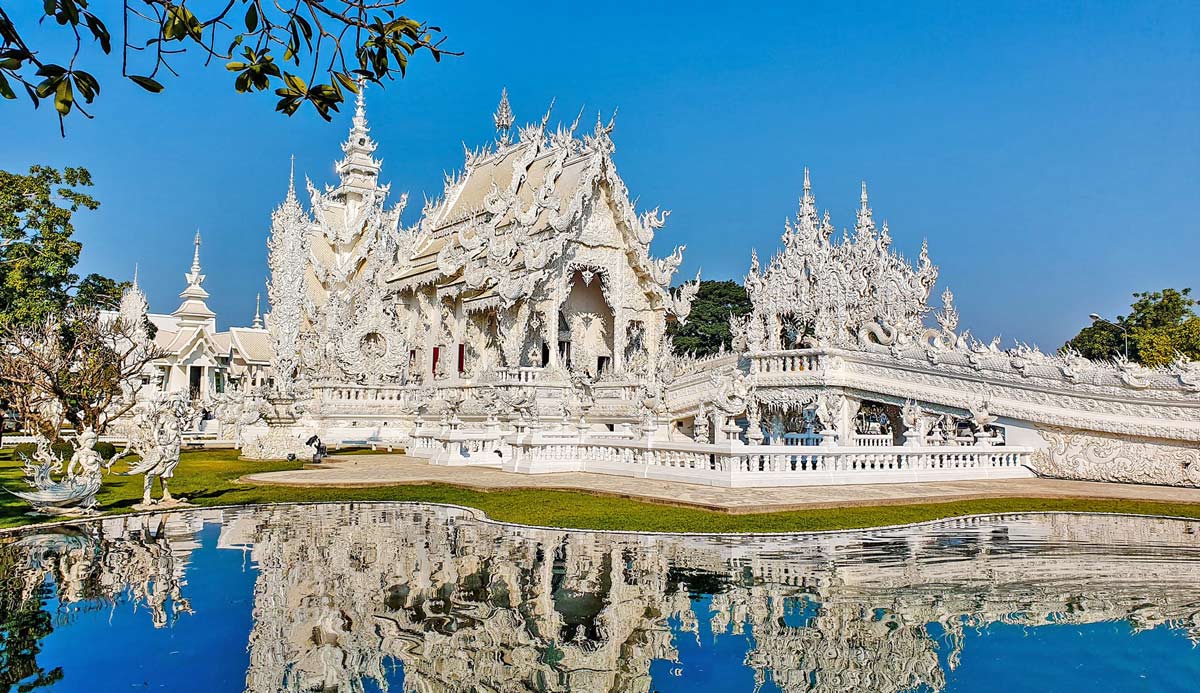Chiang Rai, a jewel nestled in northern Thailand, is a bastion of rich cultural heritage, breathtaking landscapes, and serene tranquility. A tapestry of vibrant temples and lush tea fields, this city is small yet brimming with experiences that resonate deeply within the soul of every traveler. Here, we unravel the myriad of attractions that make Chiang Rai a must-visit destination, inviting a deeper reflection on the enchantment that lingers in the air.
The symphony of colors in Chiang Rai begins with its stunning temples, each one a unique reflection of the artistic spirit and religious fervor of the region. The White Temple, or Wat Rong Khun, is perhaps the most iconic. Designed by Chalermchai Kositpipat, this contemporary marvel exceeds the bounds of traditional architecture with its shimmering white exterior, adorned with intricate carvings and mirrored mosaics. Visitors find themselves entranced, not just by its aesthetic beauty but by the symbolisms interwoven within—an allegory of the journey from ignorance to enlightenment.
While many flock to the White Temple, the Blue Temple, or Wat Rong Suea Ten, offers a contrasting yet equally mesmerizing experience. With its deep sapphire blue hues and elaborate gold finishes, this temple captures the essence of local artistry. As sunlight dances across its surfaces, the temple seems to glow, inviting visitors to pause and reflect on the intricate narratives that these structures encapsulate.
For those seeking to delve deeper into their spiritual journey, the Black House, or Baan Dam Museum, is an intriguing paradox to the gleaming White Temple. Designed by the late Thawan Duchanee, this collection of dark timber structures houses a plethora of artifacts and artworks that evoke contemplation and introspection. Visitors are often left with an ineffable blend of curiosity and reverence, as the museum questions the duality of beauty and darkness within the human experience.
Venturing beyond the city’s cultured confines, the lush tea fields of Doi Mae Salong present an altogether different facet of Chiang Rai. Characterized by rolling hills and meticulously cultivated terraces, this area is a treasure trove of oolong tea plants, an agricultural delight rooted in the history of Chinese migration to Thailand. Here, visitors can meander through the verdant landscape, sipping freshly brewed tea amidst the scenery, each cup offering a taste of the region’s heritage and a moment of tranquil solace.
The allure of Doi Mae Salong lies not only in its picturesque vistas but also in the rich tapestry of local culture. As you stroll through the fields, you may encounter local farmers diligently tending to their crops, imparting stories of their craft and traditions. Engaging with these custodians of the land helps travelers forge a deeper connection with the region, transcending the superficial layers of tourism.
For a more immersive experience, consider participating in a tea-picking activity. Learning the techniques and nuances of tea cultivation firsthand allows travelers to appreciate the delicate balance of labor and nature. The burgeoning tea industry here not only sustains the local economy but also fosters a sense of community that is palpable amongst the locals.
As the sun begins to sink beneath the horizon, casting an amber hue over the landscape, the importance of tranquility in Chiang Rai becomes ever more salient. The region is not merely a collection of sights but a sanctuary for introspection and peace. Visitors are often reminded that amidst the rush of modern life, the essence of travel lies in moments of stillness—when one can simply breathe in the beauty surrounding them and contemplate their place within it.
Accompanying the serene landscape, a delectable culinary scene serves to enhance the experience of Chiang Rai. The local cuisine, rich with flavors and steeped in tradition, invites food lovers to explore new tastes while grounding them in the region’s history. Street vendors and local eateries showcase an array of dishes, from khao soi to fresh spring rolls—each bite narrating a tale as vibrant as the sights themselves.
The local markets, teeming with vibrant colors and scents, offer a microcosm of Chiang Rai’s culture. Strolling through the Saturday Night Market, visitors can sample local delights while engaging with artisans selling handcrafted wares. The sense of community found here epitomizes the spirit of Chiang Rai, a city where time seems to flow differently, allowing moments to linger just a little longer.
As the day closes and the stars blanket the night sky, the allure of Chiang Rai captivates the heart. It remains a city that echoes with tales of devotion, artistry, and the pursuit of peace. The whispers of the temples, the tranquility of the tea fields, and the warmth of the local people conjure a sense of belonging that transcends borders.
In conclusion, Chiang Rai invites you on a journey far beyond its geographical confines. Each temple offers architectural marvels and spiritual lessons, while the tea fields unfold the richness of local culture. Ultimately, this spectacular destination remains a canvas for introspection, a veritable reminder of life’s quiet complexities. When pondering what to do in Chiang Rai, allow yourself to drift between the temples, savor a harmonious deluge of flavor, and embrace the tranquility that this enchanting realm has to offer.
